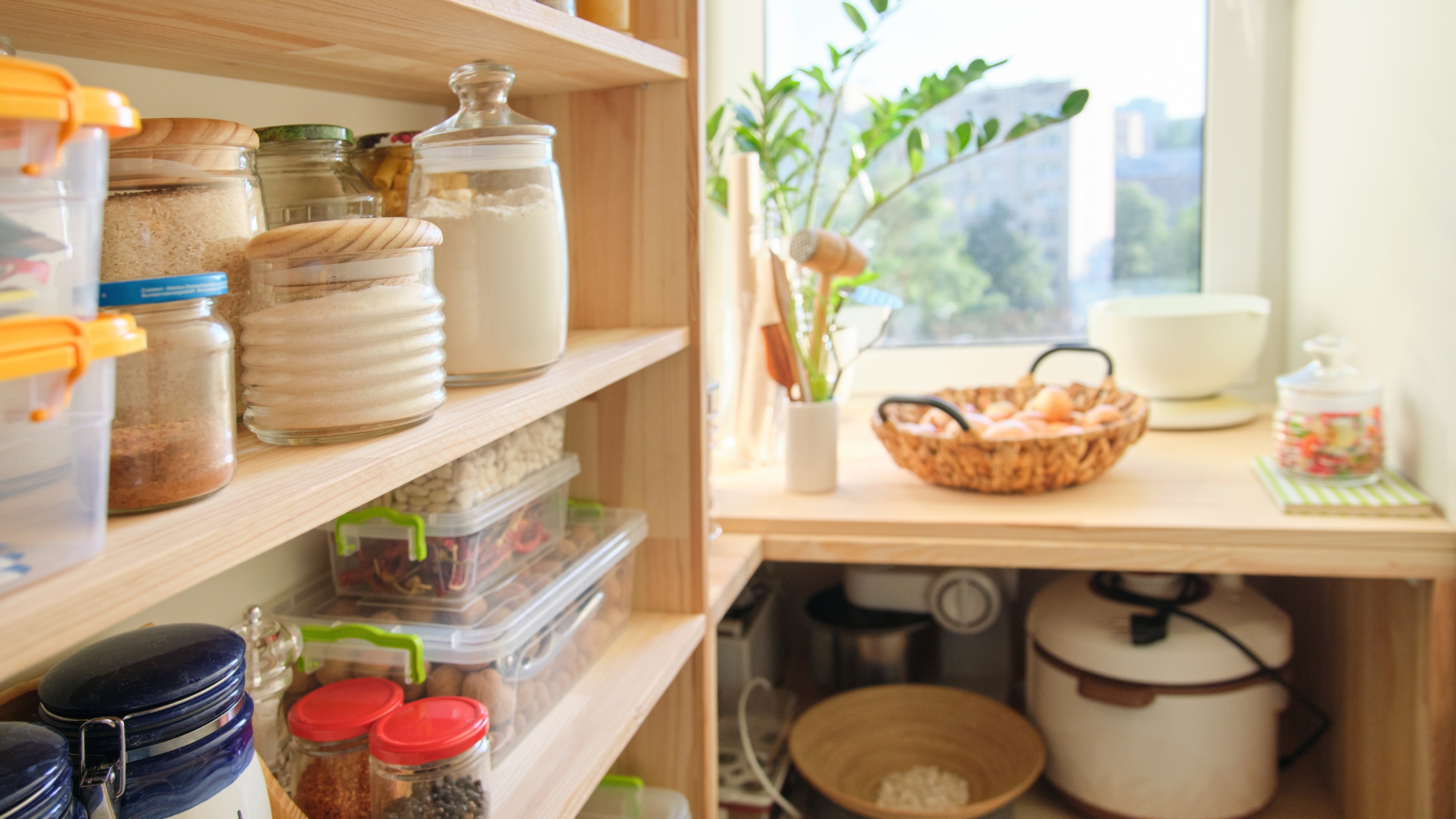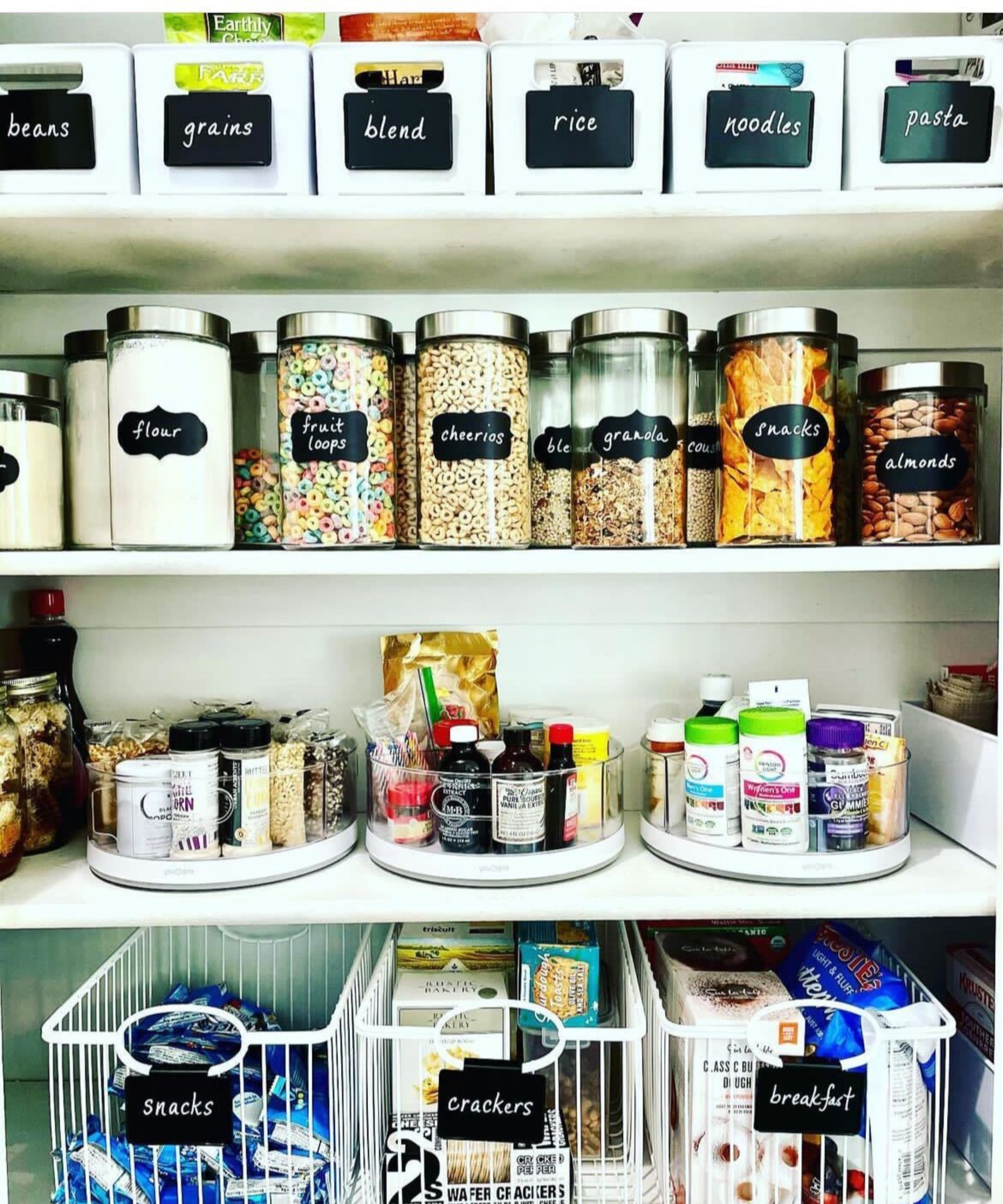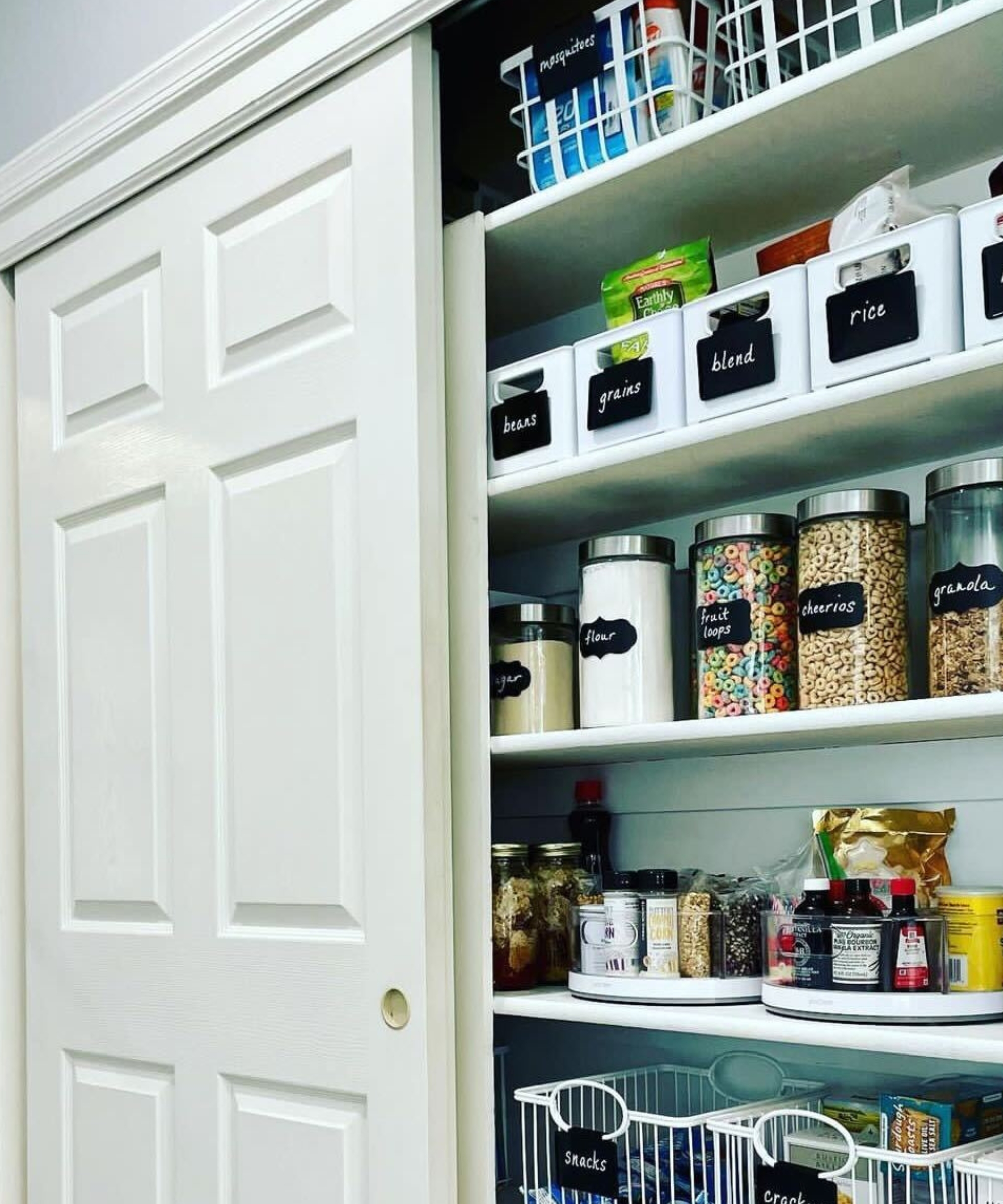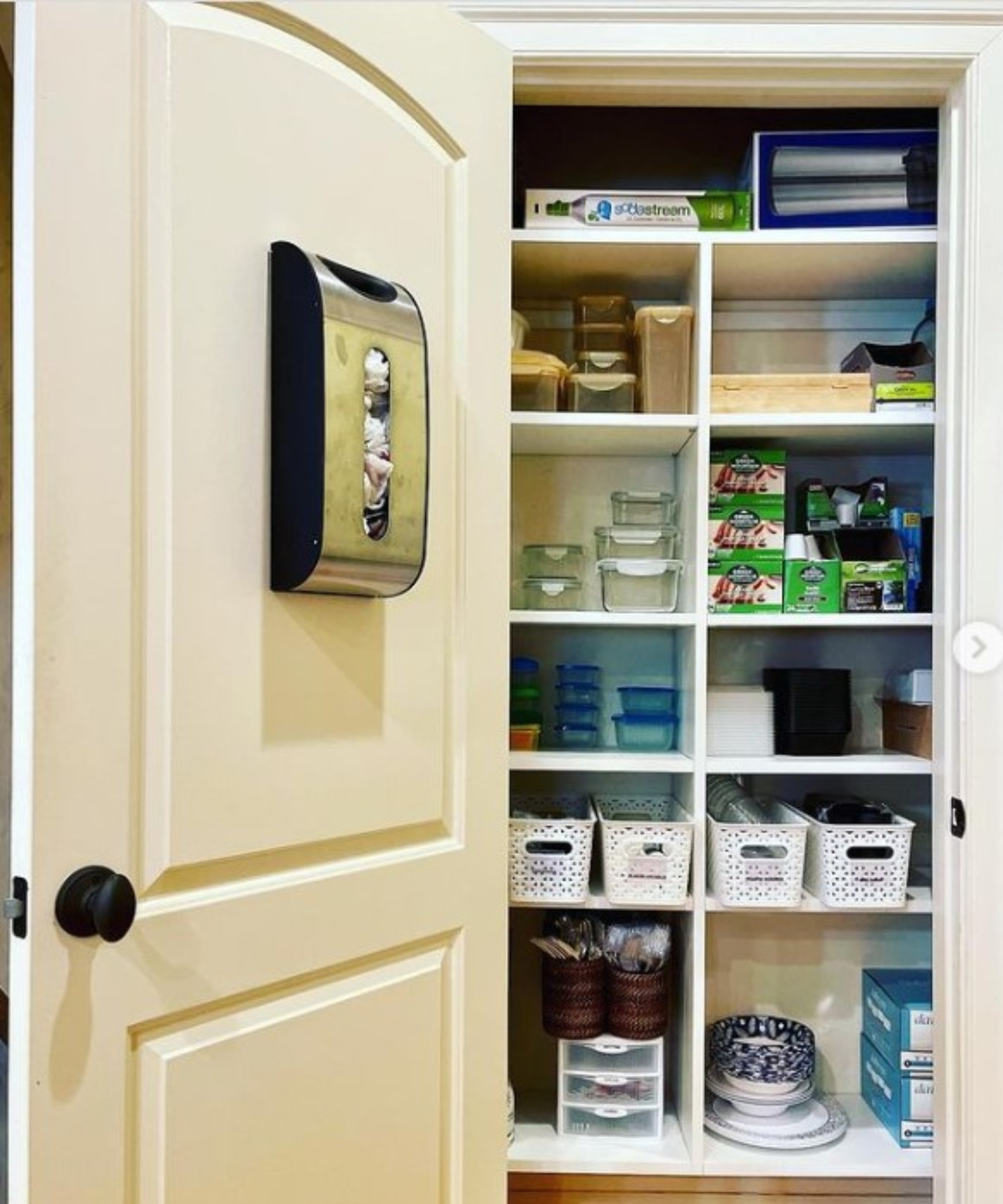How to organize a small pantry — 6 steps to success
Our professionals share top tips on how to organize a small pantry


We get it — figuring out how to organize a small pantry that’s overflowing with stuff is rather tedious. But, taking the time to neaten up the space is definitely better than spending hours searching for ingredients every time you cook.
If you’re going to make the most of your pantry, it really does pay to be organized. Avoid tearing your small pantry apart trying to locate one item by getting it properly ordered with our six savvy expert tips.
Organizing a pantry isn’t just about finding cute storage solutions but knowing which methods to use, and how to layout the space you have, so let’s get the basics squared away.
Here’s how to organize a small pantry
If you're going to keep your small kitchen organized, take the time to give your small pantry a clear out and ensure you're making the most of your space, regardless of how compact it may be.
1. Empty the entire pantry

The first step to organizing a small pantry is to focus on having a good clear out. Professional organizer, Amy Bloomer says, “Empty the entire space of all contents and be sure to throw out any expired food."
This step not only allows the space needed for a deep-clean later, but provides a good opportunity to figure out if you're current setup is fit for purpose.
Cleaning expert, Karina Toner says, "Assess the condition of your shelves, inspect for signs of pests, and address any maintenance needs before restocking.”
Get small space home decor ideas, celeb inspiration, DIY tips and more, straight to your inbox!
2. Do a thorough clean
Once the pantry is empty, give it a good clean, working from top to bottom.
Amy says, “Clean out the pantry space before putting anything back using a vacuum (such as this powerful Miele vacuum from Amazon) for crumbs, solid wastes and wipe down shelving and floors with a cleaning solution (we like this Clorox multi-purpose cleaning spray from Amazon) to remove dust and sanitize.”
3. Decide what stays

Admittedly, choosing what to keep and what to get rid of can be tough. Karina advises, “Conduct a thorough assessment of each item's usability and relevance. In addition to discarding expired items, evaluate the frequency of use and personal preferences.
"Consider donating unopened, non-expired items that may benefit others, aligning with sustainable and charitable practices.”
4. Nail the layout
Knowing how to layout your small pantry to maximize the storage space it offers is crucial.
Karina says, “Be strategic. Consider the ergonomic aspects of pantry usage, keeping frequently used items at eye level, heavier items on lower shelves, and seasonal or less-used items on higher shelves. This thoughtfulness enhances accessibility and user experience.”
5. Create zones

A great way to keep a small pantry neat and ordered is by creating zones. Amy explains, “Do this with categories of food, storing sauces together, condiments together, individually wrapped snacks together and so on.”
Karina advises specific activity-based zones, too. "Designate a baking zone, a snack zone, and a meal preparation zone," she says. "This approach fosters a highly organized and specialized pantry."
You can also boost aesthetics and functionality of your zones with a collection of clear containers (such as these air-tight food storage containers from Target). Delve into various shapes and sizes to accommodate your range of food staples.
“Optimize every inch of available space by incorporating adjustable shelving (like these adjustable pantry shelves from Amazon)," adds Karina. "This versatile solution accommodates the mixed nature of pantry items. From the tallest cereal boxes to the smallest spice jars, the ability to adapt shelf heights ensures efficient use of vertical space.”
6. Keep items within reach
If there's one thing that's going to make a mess, it's attempting to find items you use regularly, that are currently buried in the back, or underneath other pantry stock.
To combat this issue, Amy says, “Items that are most frequently accessed should be most easily accessible.”
You can embrace a one-in, one-out system, keeping a close eye on expiration dates and placing older products at the front. Karina adds, "This proactive approach minimizes food waste, ensures optimal product use, and aligns with sustainability practices.”
To help others in the household use your pantry effectively without creating mess, Amy says, “Label, label, label, to make it easy for all family members to maintain the organizational system.”
To ensure your pantry remains a valuable tool in your mix of kitchen storage ideas over the longer term, it's essential to put these expert organization strategies in place.
And, when your small pantry organization is complete, learn how to organize kitchen shelves to stop their mess being siphoned off elsewhere.

Hi! I’m Beth Mahoney and I’m a former staff writer at Real Homes. I’ve been a journalist for the national press for the past six years, specializing in commerce and trends-related lifestyle articles, from product reviews and listicles to guides and features. With an eye for pretty things (think: quirky wall prints, scalloped edge furniture, and decadent-looking tableware) but a limited budget, I love nothing more than a bargain buy.

